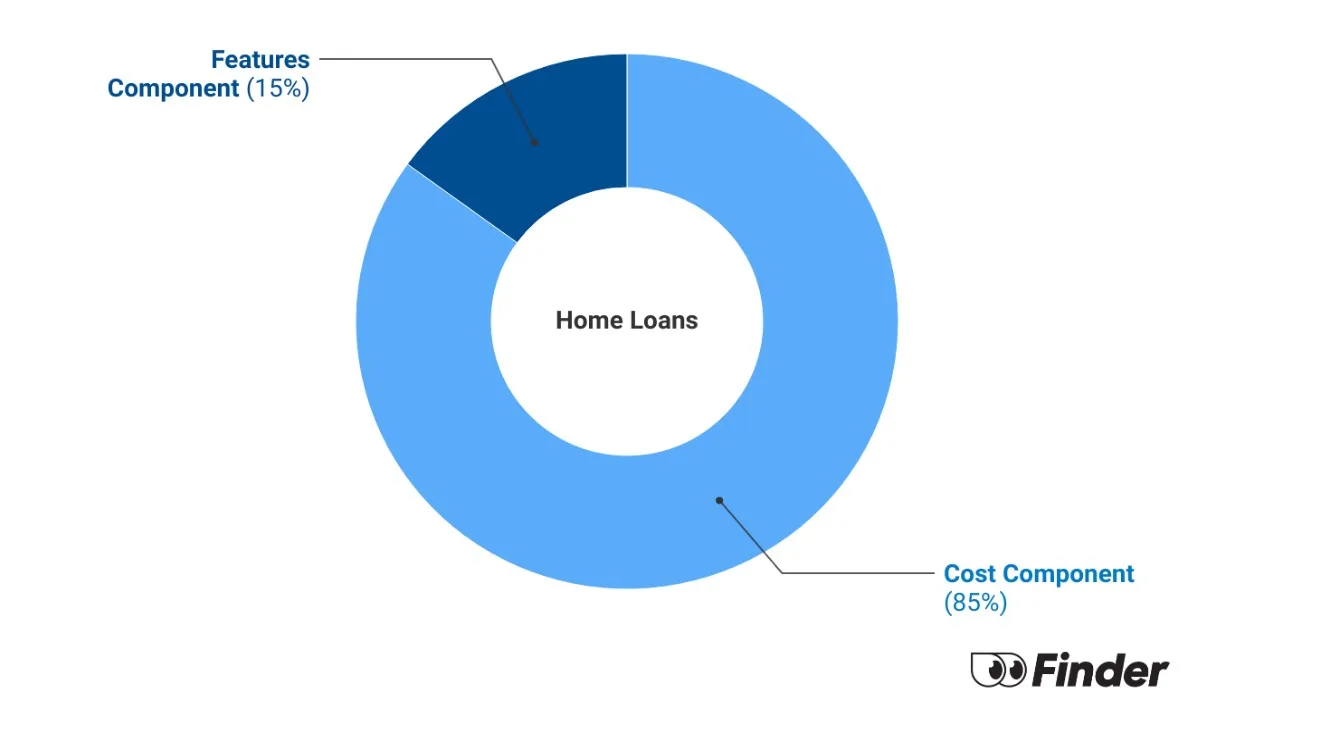The Reserve Bank has remained on the sidelines for a record 20 consecutive meetings, leaving the cash rate at 1.50%. In spite of this long period of inactivity, home loan rates have been anything but static.
Five lenders have recently raised their rates outside of the Reserve Bank. Bank of Queensland, IMB, AMP, Greater Bank and Homestar Finance have all announced out-of-cycle rate hikes, with AMP lifting rates on investment products by up to 40 basis points.
Bank of Queensland acting group executive Anthony Rose said the lender chose to raise rates due to funding pressures.
"Funding costs have significantly risen since February and have primarily been driven by an increase in 30- and 90-day BBSW rates, along with competition for term deposits. While the bank has absorbed these costs for some time, the changes announced will help to offset the impact of increased funding costs," Rose said.
Any big rate moves by lenders grab a lot of media attention, but little time is invested in explaining why lenders might move on home loan rates. Certainly, the Reserve Bank does play a role in determining bank funding costs.
However, terms like "BBSW" can be confusing for consumers. So why do lenders change their rates? We've broken down the main reasons.
- The cash rate
- Funding costs
- Regulatory changes
- Shareholder pressure
- Home loan appetite
- What can you do about it?
The Reserve Bank cash rate
The RBA makes headlines every time it holds its monthly cash rate meeting, but what exactly is the cash rate and how does it impact the rates banks charge you? The cash rate is the rate the RBA charges banks for overnight loans.
When deciding to move on the cash rate, the RBA takes several factors in
to account, such as employment, inflation, gross domestic product, consumer spending and confidence and the performance of the housing market. The Reserve Bank moves the cash rate to try to balance out growth and inflation.
Slowing inflation
One of the Reserve Bank’s primary objectives is to keep inflation low, ensuring that the prices of consumer goods don’t rise too quickly and erode consumers’ buying power.
The RBA has a 2-3% target band for inflation. It gauges this by watching the Consumer Price Index (CPI). This monthly measure shows the cost of a selection, or basket, of common consumer goods and services.
By seeing how much this index increases each month, the RBA can keep an eye on inflation. If it finds inflation is rising above its 2-3% target band, the bank may raise the official cash rate to slow consumer spending, thus slowing price growth.
Promoting growth
If the RBA wants to create economic growth, they might choose to cut the official cash rate. The intention behind this is to make money less expensive to borrow and outstanding loans less expensive to pay off, thus encouraging consumers to spend.
The Reserve Bank also pays attention to the unemployment rate in making its decisions. A higher unemployment rate could be a sign of a lack of business confidence and investment. This could lead the bank to cut the official cash rate in order to provide a boost to business confidence and, in turn, encourage hiring.
Funding costs
 The money banks lend you has to come from somewhere, of course. For most lenders, the source of this money is a mix of deposits and what’s known as wholesale debt. Wholesale debt is money the bank borrows at a lower rate and then lends on to borrowers.
The money banks lend you has to come from somewhere, of course. For most lenders, the source of this money is a mix of deposits and what’s known as wholesale debt. Wholesale debt is money the bank borrows at a lower rate and then lends on to borrowers.
An example of wholesale debt is a residential mortgage backed security (RMBS). This is a pool of mortgages owned by the bank that it sells as a bond to investors. The bank secures funds this way to make new loans to consumers, but it also incurs debt because it has to pay investors back based on the performance of these mortgages.
Another factor influencing bank funding is the BBSW, or Bank Bill Swap Rate. This is the rate banks charge each other to lend money, generally for terms of six months or less.
Banks borrow money from one another to cover their day-to-day costs. On some days, a bank may spend more money than it brings in.
To cover its outgoings and have enough money on hand to cover its deposits, a bank will borrow short-term funds from another bank. The interest rate on these short-term borrowings is the BBSW.
In addition to this, banks also have to compete for retail deposits. This means the money you decide to place in a savings account or term deposit.
To make term deposits attractive for retail customers, banks have to compete by offering higher interest rates. The higher an interest rate a bank offers on its term deposit, the lower its net interest margin (NIM) on the loans it offers.
A variety of factors influence the amount banks pay for wholesale debt. Overseas bond markets, investor risk appetite and competition for funding sources all have a huge impact on the cost of funds for Australian banks.
Regulatory change
One of the biggest factors affecting the cost of funds for banks is regulatory change. In Australia, banks are regulated by the Australian Prudential Regulation Authority (APRA). APRA sets capital requirements for banks, which means it determines the ratio of money a bank has to hold in reserve for every dollar it loans out. After the global financial crisis, APRA followed other global banking regulators in raising capital requirements for banks.
You may have heard of Basel III in relation to banking regulation. Basel III is a set of global reform measures instituted after the GFC to make sure banks have enough capital in reserve to pay back their depositors in case of an economic downturn.
This means that from 2019, banks will have to hold more money relative to the amount they lend, which makes the cost of lending money rise. This, in turn, can make your home loan rate go up as banks try to meet new capital requirements.
Not all lenders are regulated by APRA, though. APRA only oversees what are known as Authorised Deposit-taking Institutions (ADIs). This includes banks, mutual banks, credit unions and building societies.
While this captures many of the lenders in the market, there are a number of non-bank lenders that don’t fall under this umbrella. Because they don’t take deposits, that means these lenders assume all the risk for their home loans.
As such, they don’t have to meet capital requirements. This often means these lenders can offer a sharper rate than their ADI competitors.
This doesn’t always mean, though, that non-bank lenders are totally immune to regulatory change. While they may not be directly impacted by higher capital requirements, many non-bank lenders source at least some of their funding from banks. This creates the possibility that regulatory changes impacting banks can have a flow-on effect for non-banks.
FAST FACT:
The Australian Prudential Regulation Authority (APRA) regulates Authorised Deposit-taking Institutions (ADIs). This means banks, mutuals, credit unions and building societies. Non-bank lenders are not regulated by APRA.
Shareholder pressures
In weighing up the decision to move on rates, banks often try to balance the desires of their customers with the desires of their shareholders. While bank profitability tends to make headlines, the number banks really pay attention to is their Return on Equity (ROE).
A bank’s ROE is the amount of net income a bank generates as a percentage of its shareholders’ investment. Cutting rates on home loans will often reduce a bank’s ROE, while raising rates will increase it. In answering to its shareholders, a bank wants to deliver the highest ROE possible without also alienating borrowers. It’s this balancing act that can see a bank move on rates outside of the RBA.
Home loan appetite
Banks might not come out and say it, but their appetite for growth can play a huge role in the competitiveness of their rate offering. In setting their home loan strategy, banks make a decision about how fast they want to grow their total portfolio of home loans.
You may have heard banks in their financial results referring to growing at, above or below system growth. System growth is the average growth of the home loan market across all lenders. If a bank decides it wants to grow above system, it means it has a higher appetite for home loans.
To achieve this, it might cut its interest rates independent of the RBA in order to create more home loan demand. If it decides it wants to slow down its growth, it might not be as concerned with bringing a competitive offering to the market. It might even choose to raise rates in order to blunt home loan demand.
What to do about it
Out-of-cycle rate moves can cut both ways. Banks can lower rates outside of the RBA in order to generate more demand for their products, but they can also raise them if their funding costs go up or if they want to generate a higher ROE. However, this doesn’t mean you have to be at the mercy of out-of-cycle rate hikes.
When your bank moves on rates, it’s a great time to check into getting a better deal through another lender. As we mentioned above, non-bank lenders are often able to offer sharper rates because they don’t face the same capital requirements and regulatory changes. Likewise, a move by one bank might not signal a move by all other banks.
Banks can face different funding and profitability pressures, and an out-of-cycle rate hike by one lender can present an opportunity for other banks - and for you - for more competitive deals.
Refinance your home loan
Compare other products
We currently don't have that product, but here are others to consider:
How we picked theseWhat is Finder Score?
The Finder Score crunches 7,000 home loans across 120+ lenders. It takes into account the product's interest rate, fees and features, as well as the type of loan eg investor, variable, fixed rate - this gives you a simple score out of 10.
To provide a Score, we compare like-for-like loans. So if you're comparing the best home loans for cashback, you can see how each home loan stacks up against other home loans with the same borrower type, rate type and repayment type. We also take into consideration the amount of cashback offered when calculating the Score so you can tell if it's really worth it.
Read the full Finder Score breakdown
Ask a question
More guides on Finder
-
Mortgageport Home Loans
Mortgageport is a non-bank lender and mortgage manager, offering tailored home loan solutions for residents and non-residents.
-
WLTH home loans
For every home loan WLTH settles, it helps clean up 50sqm of beaches and coastline. It offers products for buyers, refinancers and investors.
-
Home loan cashback offers
Home loan cashback deals can help you refinance to a cheaper interest rate and get a lump sum cash payment. Compare the latest deals and check your eligibility today.
-
Current home loan interest rates in Australia
We compile the average home loan interest rates in the market and update them monthly.
-
Compare bank interest rates in May 2025
Compare current bank interest rates for home loans, credit cards, personal loans, savings accounts and term deposits to find the best deal for you.
-
Low deposit home loans
You may be able to get a low deposit home loan with just a 5% cash deposit. Here are the lenders who are more likely to lend you a 95% loan.
-
Investment home loan rates
The best investor home loan rates that have been offered in years have hit the market. Compare investment property loan rates today.
-
Cheap home loans – rates from 4.99%
Find the cheapest home loan rates and learn how to decide which one best fits your needs and will save you the most money.
-
Best variable home loan rates
Find a great deal on a variable interest rate home loan from lenders large and small. Start comparing and saving today.
-
Best home loan rates – 6 expert picks
Learn how to compare rates to find the best home loan and start saving money on your mortgage today.
